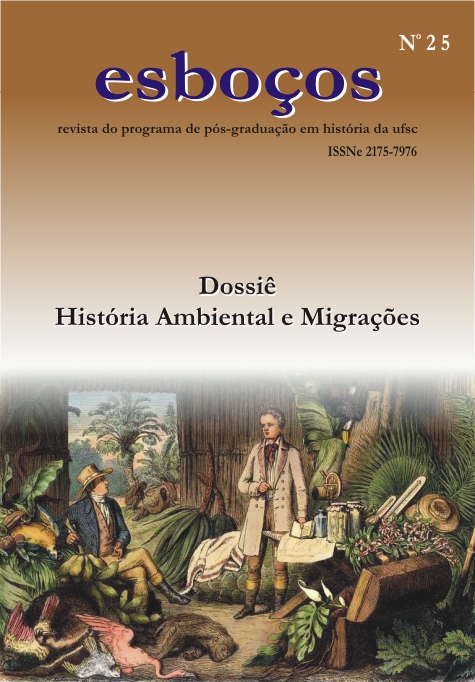Environment and Public Health: the urbanization of Nossa Senhora do Desterro in 19th century
DOI:
https://doi.org/10.5007/2175-7976.2011v18n25p142Abstract
Nossa Senhora do Desterro, capital of the Province of Santa Catarina went through major urban changes in 19th century. Until then it was a peripheral city, despite a strategic shipping routes in the south of Brazil. In middle of 19th century a significant urban and commercial growth occurs, and as consequence, an increase in the problems of public health and supplying. Parallel to this process of development of the urban center of Desterro and the biggest commercial contact with the capital of the Empire, new uses had started to be attributed to the beaches and rivers and some customs had undergone a redefinition process. This has generated debates and questions about practices that until then were common as the sewage disposal on beaches and the laundering clothes in rivers and streams of the city. This text is an analysis of this process of transformation of practices and customs, an examination of the new local perceptions about the ideas of hygiene and social life.Downloads
Published
2011-06-23
How to Cite
Cesco, S. (2011). Environment and Public Health: the urbanization of Nossa Senhora do Desterro in 19th century. Esboços: Histories in Global Contexts, 18(25), 142–163. https://doi.org/10.5007/2175-7976.2011v18n25p142
Issue
Section
Special issue
License
Esboços: histories in global contexts adopts an Open Access policy and it is licensed under a Creative Commons Attribution 4.0 International License (CC-BY 4.0). Authors will be asked to sign an open access license agreement before publication.
Authors who publish with this journal agree to the following terms:
- Authors grant the journal Esboços: histórias em contextos globais (ISSN 2175-7976) right of first publication with the work simultaneously licensed under a Creative Commons Attribution 4.0 International License (CC-BY 4.0).
- This license allows users to remix, transform, and build upon the material, on the condition of giving acknowledgement of the work's authorship and initial publication in this journal.
- 3.Authors are able to enter into separate, additional contractual arrangements for the non-exclusive distribution of the journal's published version of the work (e.g., post it to an institutional repository or a personal website, or publish it as a book chapter or a translation).

This work is licensed under a Creative Commons Attribution 4.0 International License.







